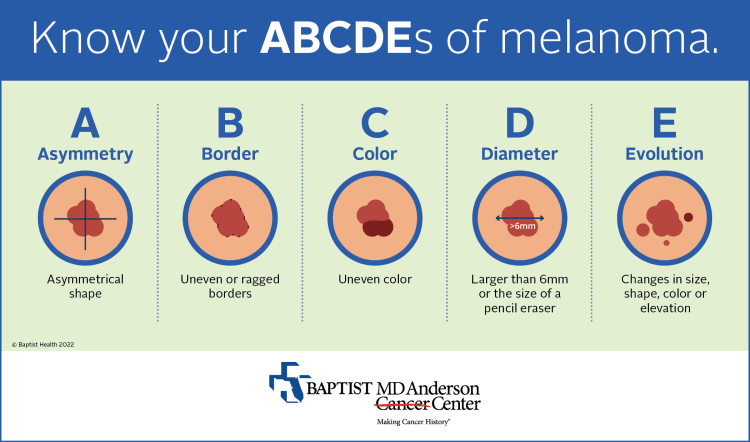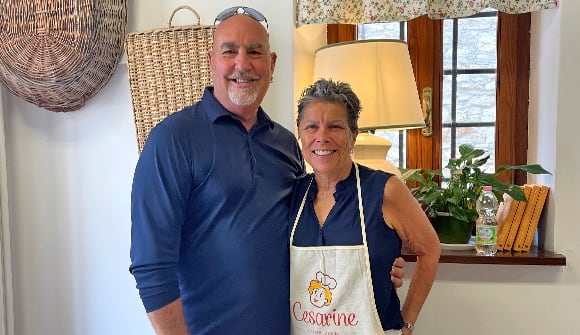Spot the difference
Harmless lesion or potential melanoma?
Article Date:

As you get older, you may notice small brown spots starting to appear on your face, hands, arms or elsewhere. Are these a natural part of aging caused by sun exposure over the years, or could they be something more serious?
Melanoma mayhem
According to the American Cancer Society (ACS), the risk of melanoma – the deadliest form of skin cancer – increases as people age, but it’s not uncommon to find it in adults younger than 30. In fact, in recent years, it’s become one of the most common cancers in young adults, especially women.
Melanoma is the fifth most common cancer diagnosed in both men and women in the United States. In 2022, an estimated 99,780 cases will be diagnosed nationwide, according to ACS. Despite the alarming statistics, many people are unaware of or disregard the steps they can take to reduce their risk.
“The younger individuals are, the easier it is for them to disregard precaution and feel they’re not vulnerable to these risks,” said Konstantinos Chouliaras, MD, a board-certified surgical oncologist at Baptist MD Anderson Cancer Center. “Things like using tanning beds, not applying or re-applying sunscreen, foregoing regular skin checks and not wearing protective clothing are habits that will increase younger people’s risk of developing skin cancer.”
While it accounts for only 1% of skin cancers, melanoma is the deadliest form due to its ability to spread to other parts of the body if not caught and treated early enough. Places, where melanoma can be hiding include the groin, armpit, genitals, mouth, eyes, fingernails, toenails and scalp.
“Skin cancer can appear literally anywhere,” said Dr. Chouliaras. “Even though areas with chronic sun exposure are more at risk, areas that are not typically exposed can also be affected.”
ABCs of detection
Often, it’s challenging to distinguish an innocuous sun spot from a suspicious mole, so the best preventive action to take is to pay attention to changes in skin lesions.
“In general, spots that change, get bigger in size, appear asymmetric, are raised or have an ulcer, or start bleeding or itching should be assessed by a dermatologist,” said. Dr. Chouliaras. “More importantly, seeking medical attention from a skincare specialist is critical to differentiate between benign and malignant lesions, and anything in between.”
It’s important to note that not all skin cancers look the same. A great way to remember how to spot a suspicious mole(s) is by using the ABCDEs of melanoma.

Check those specks
It’s important to be systematic and consistent when performing self-exams. Paying close attention to areas that have appeared recently or might be changing is critical and ultimately, can save your life.
“Consistent checks over time are likely to be more effective than a single occasional check here and there,” said Dr. Chouliaras. “It’s easier to perform a quick self-check after a shower when someone can spend time in front of the mirror and assess as many areas as possible.”
If you’re concerned about a sun spot, you should have your skin examined by a medical professional as soon as possible.
Sun sense: the ultimate defense
Though skin cancer is the most common cancer in the United States, it’s also one of the most preventable. There are several ways to protect your skin from the harmful effects of chronic sun exposure.
“Applying sunscreen daily, avoiding sun exposure during peak sunlight hours, wearing protective clothing, getting regular skin checks and staying vigilant about new or changing moles can make a big difference,” said Dr. Chouliaras. “Using sunscreen consistently, even on cloudy days and during the winter months, can make a difference.”
If your skin is prone to developing moles or sun spots, or you have a family history of melanoma, it’s important to have your skin screened on a regular basis. Talk with your primary care physician about what to do next. For more serious concerns or to talk with a cancer specialist, visit BaptistMDAnderson.com to schedule an appointment.
Source: American Cancer Society



